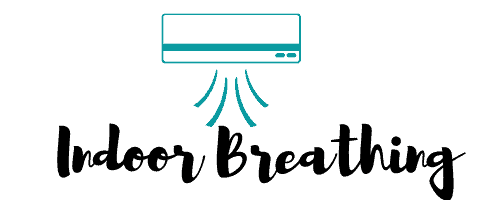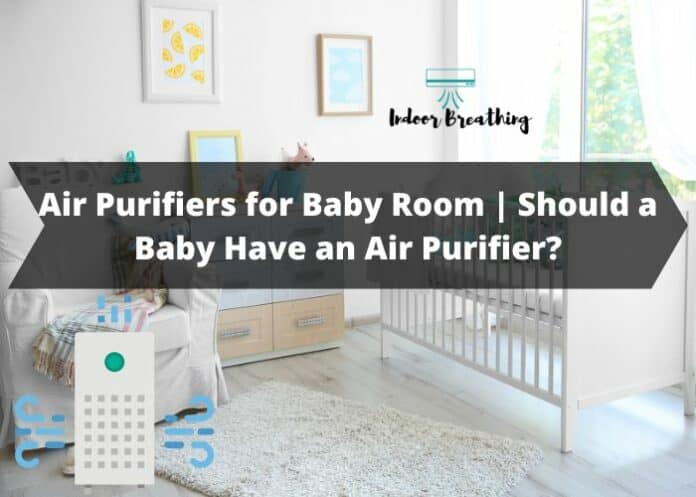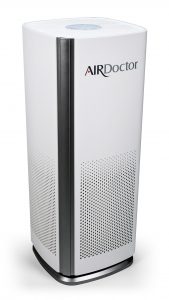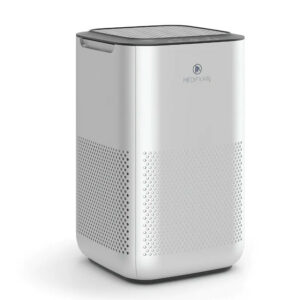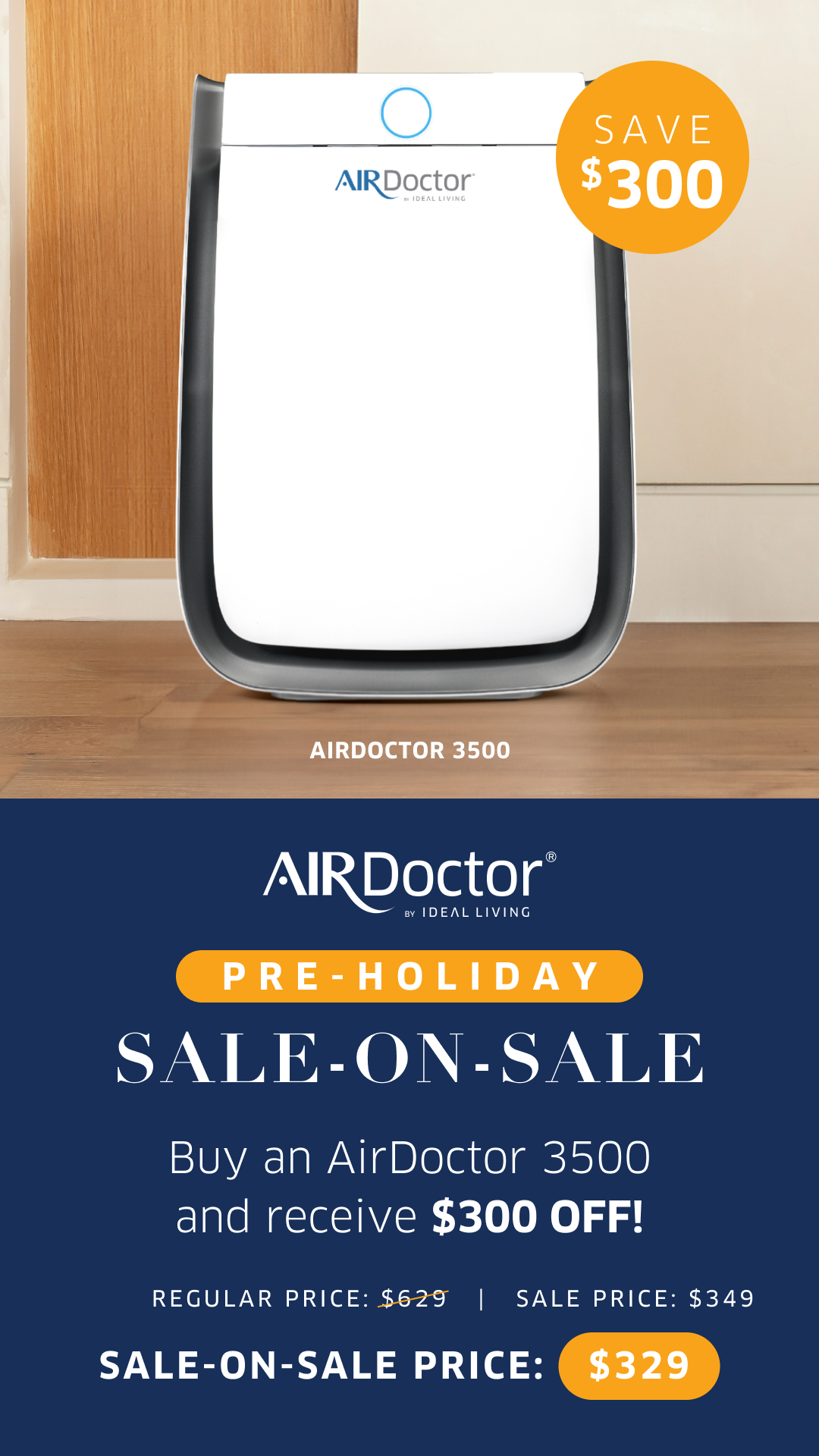Without a doubt, our environment today is filled with allergens and dust. Not only that, but air pollution is also increasing more rapidly. That being said, we cannot deny that respiratory issues are becoming more complicated, especially for babies.
Placing an air purifier inside their room is extremely necessary and reasonable to ensure your child’s safety. Air purifiers are good at improving the air quality in a particular room. Thus, you are certain that your baby’s room sleeps in has clean and good indoor air quality.
Today, there are lots of air purifiers on the market. As a result, choosing the best and the right one has never been an easy task. So to help you, in this article, I have included all the essential information that you need to know before making a purchase.
Table of Contents
Should a Baby Have an Air Purifier?
It depends on many factors, but overall, it is more likely that you should have an air purifier for the baby’s room than not.
Usually, indoor air is more polluted than outdoors; it contains many hazardous chemicals such as particles from cleaning products, pet dander, mold spores, dust mites, VOCs, bacteria, and more.
Babies breathe more frequently than adults, and their lungs are not yet as large and developed, so it is essential to minimize chemicals and toxins around them.
Many pollutants you can avoid without using an air purifier; for example, don’t allow pets to go in the baby room, stop smoking in the home, get rid of carpets, and use “neutral” cleaning products. Also, often open windows to let fresh air come in.
You can use an air purifier to ensure the air is clean and your baby breathes pollution-free air.
Top 3 Best Baby Air Purifiers
1. Best Overall: PureZone Enrichment 3-in-1 Air Purifier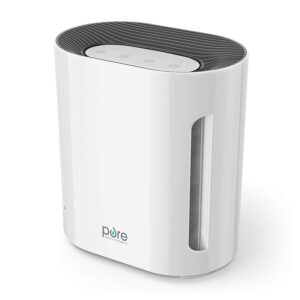
This 3-in-1 air purifier from PureZone Enrichment can capture 99.97 percent of all home odors, smoke, pet dander, pollen, and dust haunting the air. The air purifier uses UV-C light to eliminate germs, viruses, and bacteria.
In addition, this purifier will guarantee more restful periods of sleep as it functions with a whisper-quiet operation.
This product is also energy efficient; it features timer options of 8, 4, and 2 hours of operation before shutting off automatically. Furthermore, the cleaner is straightforward to set up and operate.
The Purezone Enrichment air purifier has three filters: a pre-filter, a HEPA filter, and a carbon layer. It also has 3-speed settings.
Finally, the air purifier has an indicator that will tell when it is time to replace the filter.
Pros
Cons
2. Runner-Up: AirDoctor 1000 Air Purifier
AirDoctor 1000 is more powerful and has better purification (it can trap smaller particles) than PureZone Enrichment, but I can’t place it number one because of the size. It is lightweight but a bit tall, so you may have problems placing it in the baby’s room.
Other than that, it would be a clear winner, and here is why. It can trap smaller particles than air purifiers using true HEPA filters, which means better filtration of viruses and bacteria.
It has an auto mode, which is such a good feature. You can turn it on and forget about it. It will adjust fan speed settings based on air quality in the baby room.
Also, AirDoctor is a very quiet air purifier and will save you money because of its low power consumption.
Pros
Cons
3. Most Compact: Medify Air MA-15 Air Purifier
If you want a great quality air purifier and save space, then Medify Air MA-15 is your choice. It is only 7.5 X 12.2 in size, very lightweight, and consumes only 18W energy.
Even with such size, it can clean air in up to330 sq. ft. large rooms every 30 minutes. It has a True-HEPA filter to filter most of the airborne particles.
If you like this air purifier, you can also check the Medify Air MA-22 model, which is very similar, just with a different design.
Pros
Cons
Why Are Babies So Vulnerable to Air Pollutants?
Babies have underdeveloped defense mechanisms and are born with immature immune systems.
This means that air pollution’s cellular damage cannot be repaired, which may result in abnormal growth.
Babies breathe more rapidly compared to adults.
Babies have little body mass. So, a lower concentration of airborne pollutants would negatively affect their health. On the other hand, adults can inhale the same amount of airborne pollutants, but it won’t leave any danger.
There is rapid growth in a baby’s immune, respiratory, and neurological systems.
Early exposure to contaminated air can cause sudden infant death syndrome and lifelong health damage.
Another reason babies are vulnerable to air pollutants is that some indoor pollutants are floating around the air; however, many end up near or on the floor. These particles may get stuck in the form of cool air bracketed by concise warm air. This will increase pollution near the ground where your baby spends most of their time.
Thus, it is no surprise why using an air purifier is very important.
The Hidden Dangers Lurking in Your Nursery
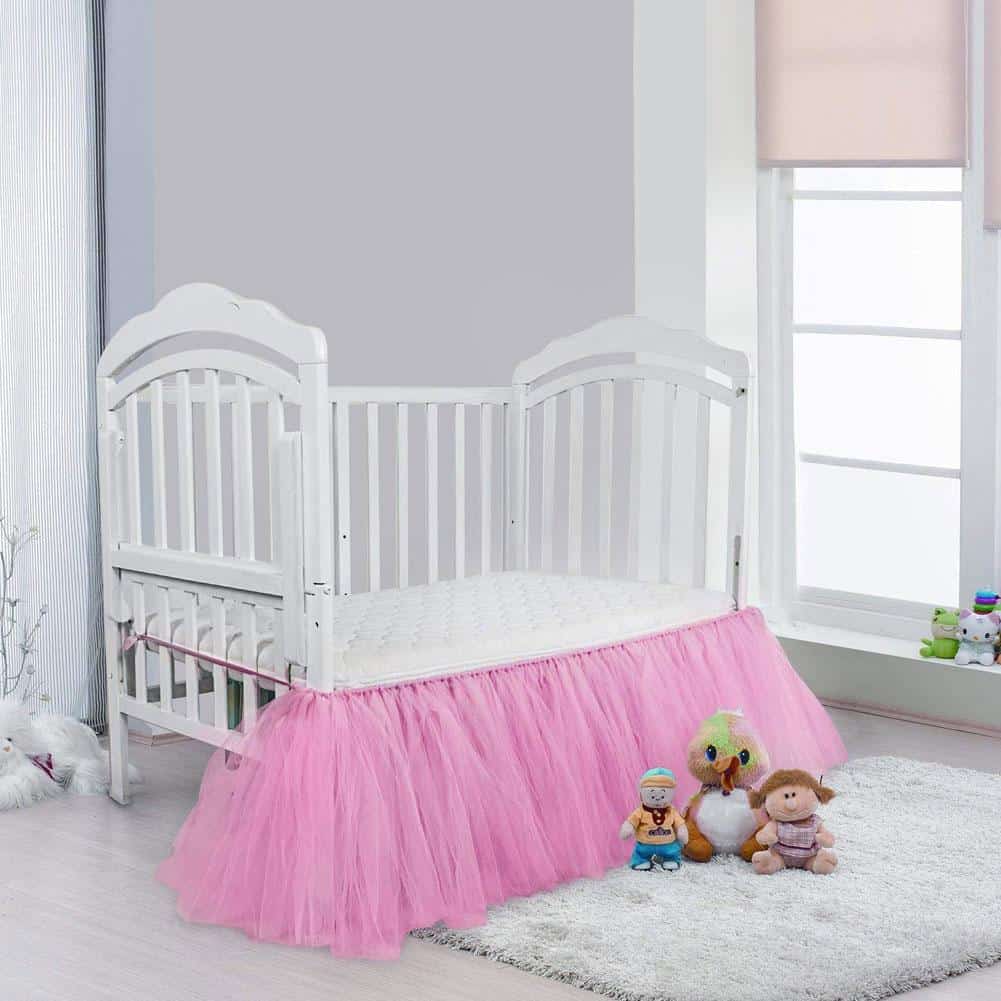
Are you aware that many pollutants and hidden dangers lurking inside your nursery, even if it is freshly cleaned or renovated? Well, this is true. So here is a list of hidden dangers lurking inside your baby’s room.
- Crib mattress
Usually, mattresses are treated using waterproofers, flame retardants, and antibacterial agents that contain harmful chemicals.
Since babies spend most of their time in the crib, you may want to invest in a mattress that is Greenguard certified and organic.
- Crib
Often, carcinogen formaldehyde is utilized in making pressed and composite wood cribs. This material may off-gas in the room of your baby, where they will breathe in throughout the day.
- Babycare products
Many parents are confident that baby products from popular manufacturers only use safe ingredients. Unfortunately, this assumption is not valid. Recent research found that 67% of bay products have chemicals associated with cancer.
That said, read the labels carefully and make sure the products are pure or gentle, sensitive, and natural. Better yet, consider buying an organic or creating your own.
- Paint
Most parents want to keep their baby’s room visually appealing by painting it with colorful paints. As a piece of advice, when buying paint, make sure to opt for one that doesn’t contain explosive organic compounds. Fortunately, most indoor paints today have no explosive organic compounds.
The Health Effects of Bad Air Quality
We all know that breathing in air containing any contaminant concentration is not suitable for children and adults.
Without the help of a device like an air purifier to get rid of things like volatile organic compounds, pet dander, mold, and allergen from your baby’s room may result in severe health complications.
Nevertheless, the following are the health effect of bad air quality:
- Cancer
- Organ damage
- Nervous system damage
- Asthma, bronchitis, and other respiratory problems
- Fatigue
- Uncontrollable tiredness
- Sore throat
- Nausea and
- Headaches
Thankfully, air purifiers have come into existence. These devices will help lessen your baby’s exposure to above-ground toxins.
What is the Best Type of Air Purifier for Infants, Babies, and Toddlers?
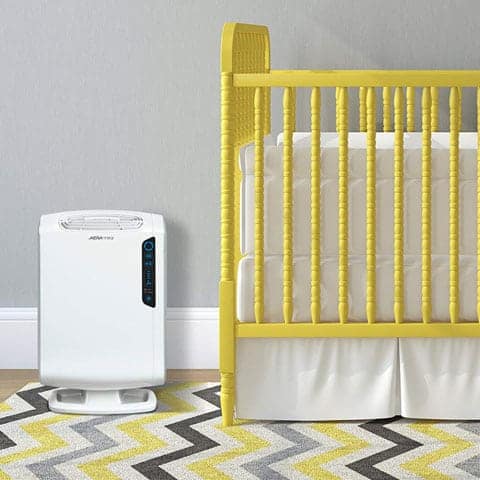
Before buying an air purifier for your baby’s room, you must understand that these devices are available in different types. But sad to say, not all air purifiers are specially made for young kids. If you obtain the wrong type, you are also putting your child’s safety at risk.
Below, we have outlined the best type of air purifier for toddlers, infants, and babies to prevent this from happening.
True HEPA Filter
This type of filter excels at getting rid of familiar sources of pollution at home. One of the best things about the True HEPA filter is that it can trap and lock 99.97 percent of particles like bacteria, pet dander, mold spores, and pollen, passing through it down to .3 microns in size.
Activated Carbon Filter
The carbon filter performs well in eliminating unpleasant odors together with a volatile organic compound. As the particles move across the filter, they will be absorbed and sealed without any chance of leakage.
This feature makes buying an air purifier a significant investment for most buyers.
Features to Look for in a Nursery Air Purifier
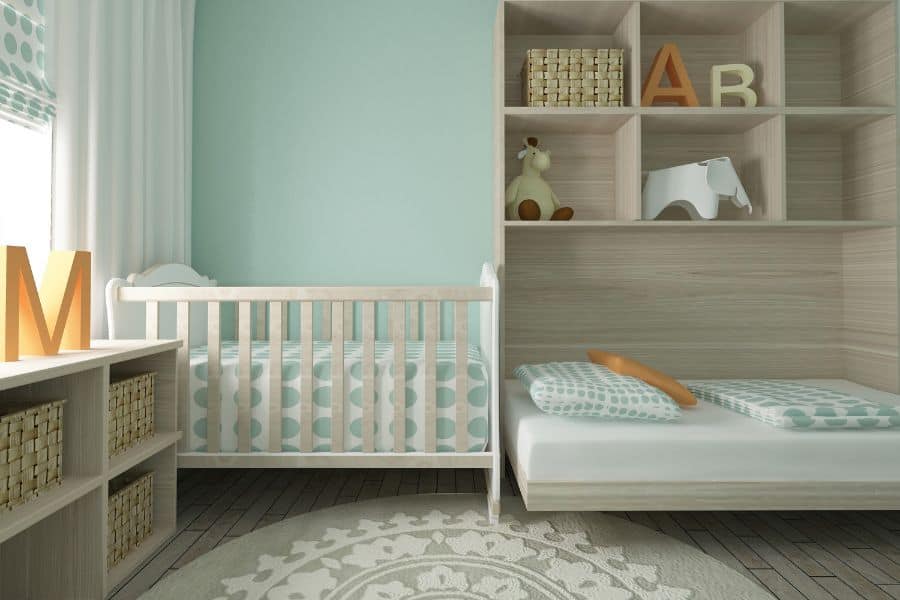
Here are the essential features you need to look for in an air purifier for your nursery.
-
UV-C Light
When people hear the term UV or ultraviolet light, they instantly think of cancer, sun, and skin damage.
While this light has a connection to the things mentioned above, the certainty is that UV light’s spectrum is broader than the rays of sunlight. Furthermore, various kinds of ultraviolet lighting exist – UV-C, UV-B, and UV-A.
UV-B and UV-A are the longer wavelengths you block using sunscreen to prevent them from causing cancer and skin damage. On the other hand, UV-C is not dangerous to people as its wavelength is short, and it is almost difficult for it to penetrate your skin.
One of the reasons why there is a UV-C light on air purifiers is that it is utilized to kill germs, bacteria, and viruses.
When the air moves over the system, the UV-C light will neutralize these harmful particles, making them safe for your child’s health.
Moreover, if you buy an air purifier for your baby’s room with UV-C light, you will be glad to know that the bulb is installed inside the device. Meaning says there is no way for the light to come across with your child unless the device is torn apart physically.
-
Durability
Wobbly air purifiers will not do any good in your child’s room. Thus when you are buying one, make sure to evaluate the device’s bottom. It must have a wider base than the purifier’s width, mainly if it is a tower model.
On the other hand, if the device has feet or legs instead of a flat base, ensure that the bottom is made of anti-slip material.
-
Brightness
The lights that display the room’s air quality make the button easier to see. While the sleep mode will always decrease the fan’s speed, it can also reduce light brightness in selected purifiers.
On the other hand, some air purifiers come with a separate button that allows you to increase and decrease brightness.
-
Quietness
Fans give off the white noise. However, a few produce too much noise, leading to a disturbed sleep cycle. Today, most air purifiers come with three fan speeds.
But some provide a sleep mode, which will set the fan at its slowest speed once you push a button. Nevertheless, no worries occur if the sound is a big deal because most manufacturers indicate the air purifier’s noise output.
Ideally, the decibels shouldn’t be less than 50.
-
Convenience Modes
Every parent knows that taking care of a baby is not easy. So why stack on further responsibilities?
Fortunately, many air purifiers today come with convenient features that save hassle and time.
For example, some models come equipped with a lockable panel that guarantees your baby will not turn off the device or turn down the fan speed when they press a certain button.
In addition to that, there are models with modes that will change the settings for you. The timed mode will ensure that the device turns off after several hours. The air purifier’s indicator will tell the device what fan speed should be used in automatic mode.
An eco-mode will also turn off the device if the air quality remains healthy or reduces the fan speed.
Warning: Types of Air Purifiers to Avoid
Aforementioned, not all air purifiers are made for babies. So here are the types of purifiers you should avoid to ensure your baby is safe.
-
Ozone Generator
As the name implies, this product gives ozone into the air, causing severe problems related to the nasal passages, eyes, and respiratory system.
-
Ionic Air Purifier
Aside from ozone generators, it would help if you stayed away from an ionic air purifier. Though this product is 100 percent safe for adults, it does produce a level of ozone as a side effect when purifying the air.
And young kids shouldn’t be exposed to any ozone as it may negatively affect their organs and respiratory system.
In addition to these two, some purifiers that utilize a True HEPA filter may have an ionizing or ionizer feature to improve the air cleaning capabilities.
If you see an air purifier that uses a True HEPA filter, check if it has an ON/OFF switch intended for the ionizer so that you can turn it off for your baby’s safety. Better yet, opt for one that does not possess this feature.
Tips on Using an Air Purifier in Baby Room
For smooth operation and optimal efficiency, follow the tips below when using an air purifier in the baby room.
- Keep the air purifier out of your child’s reach.
- Position the device close to the diaper rail to clean used diapers’ unpleasant and foul odors.
- Change and clean the filter regularly.
- Set on an even surface
- Run the purifier 24 hours a day to keep the indoor air clean
What Is Better Air Purifier Or Humidifier For Baby?
Summary
Although filtered and clean air is crucial in every part of your home, having a baby at home becomes more important.
With our recommended picks for the best air purifier for baby rooms, everybody can obtain something that will fit their budget.
Whether you want to keep your baby’s room free from pollutants and odor or looking to reduce allergens, we assure you that there is at least one model that will suit you.
On the other hand, babies need quiet surroundings as they sleep. Fortunately, all our suggestions operate quietly.
